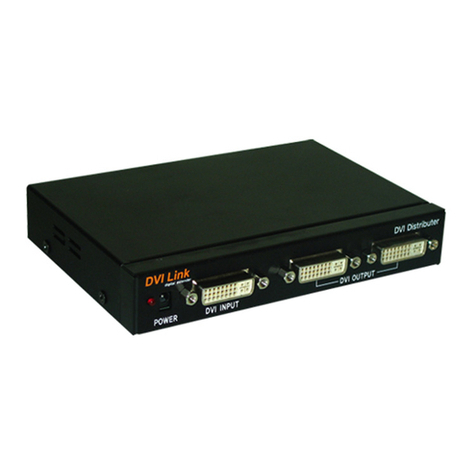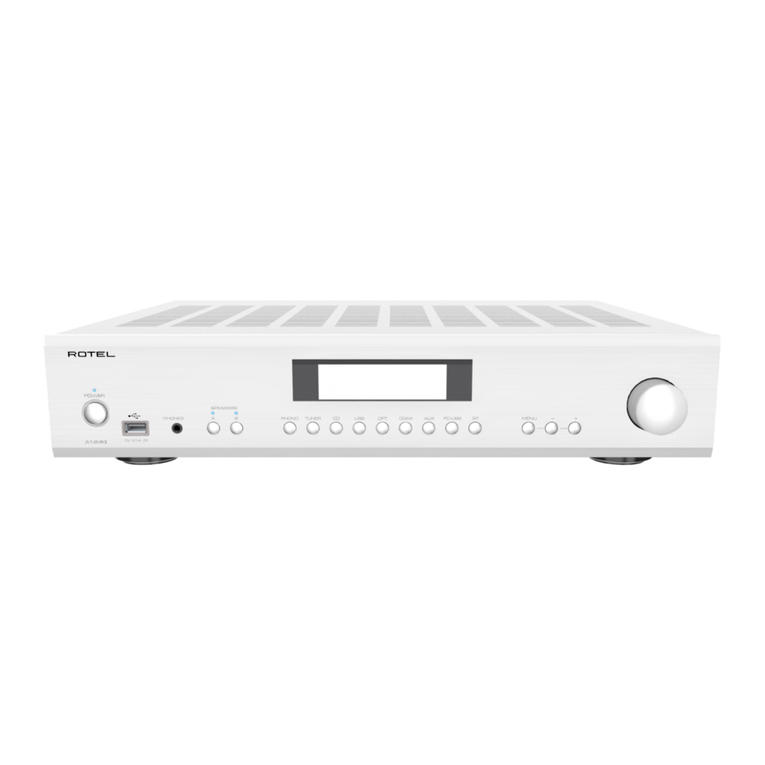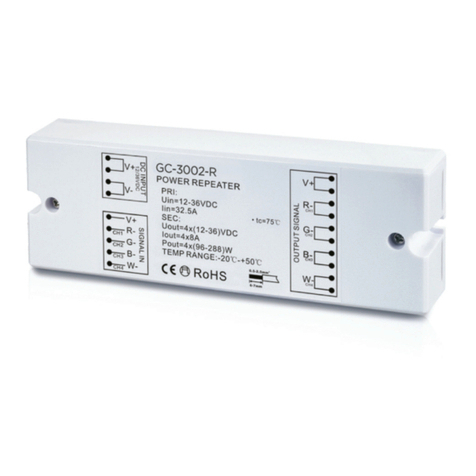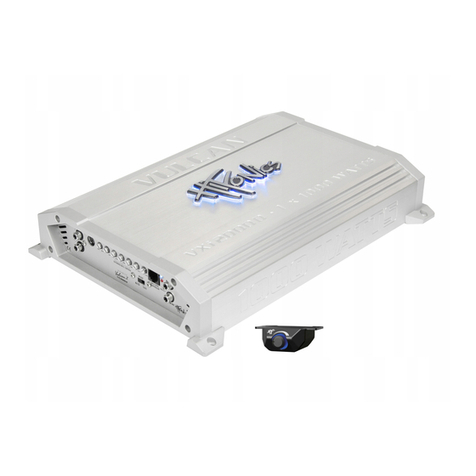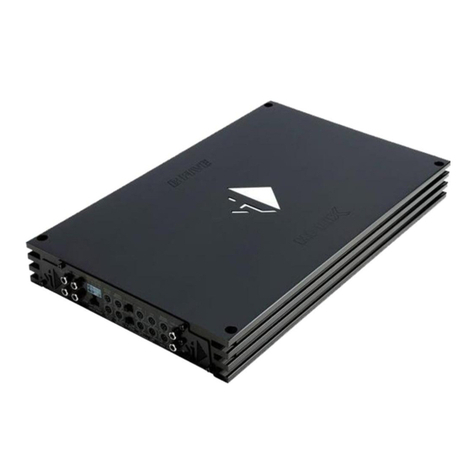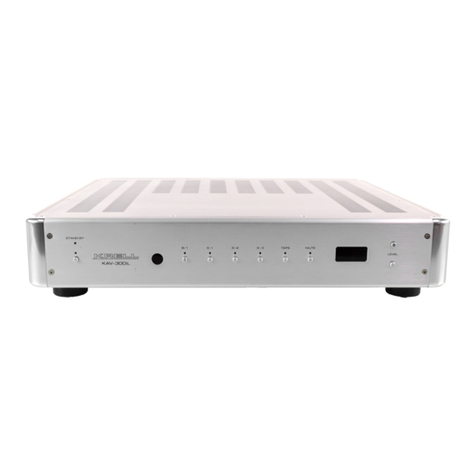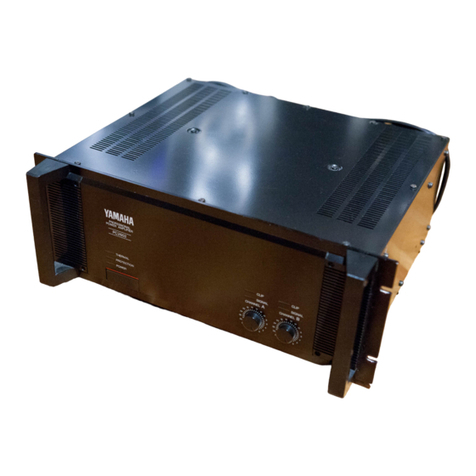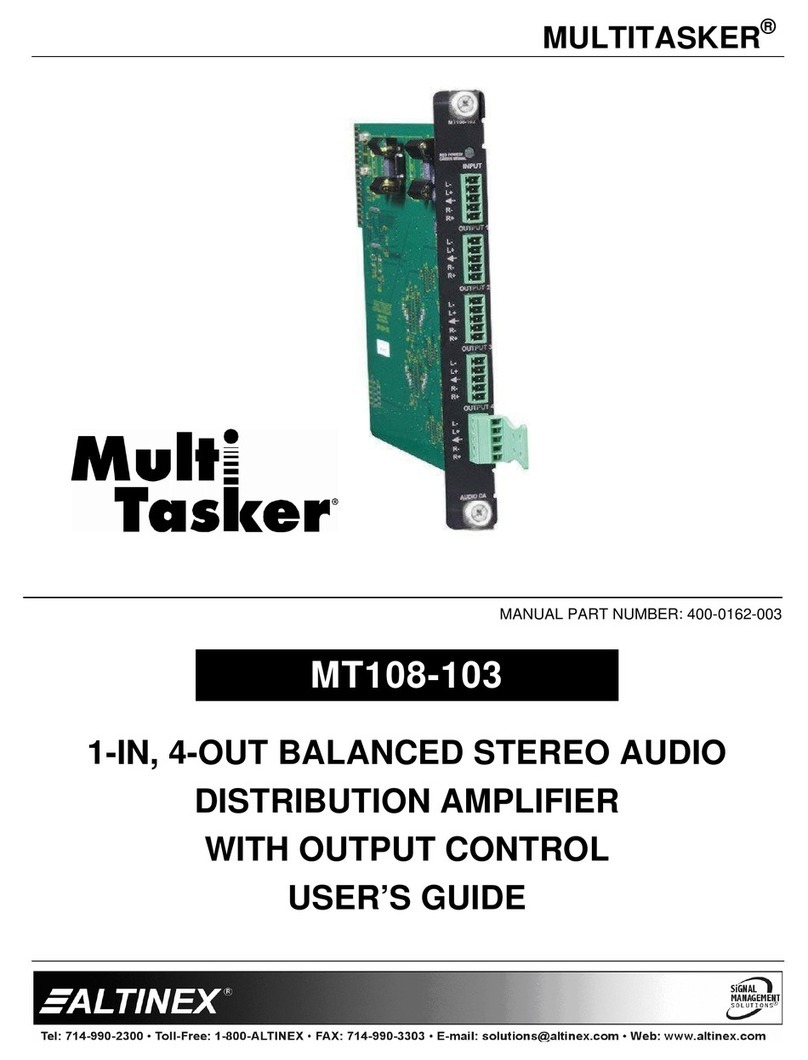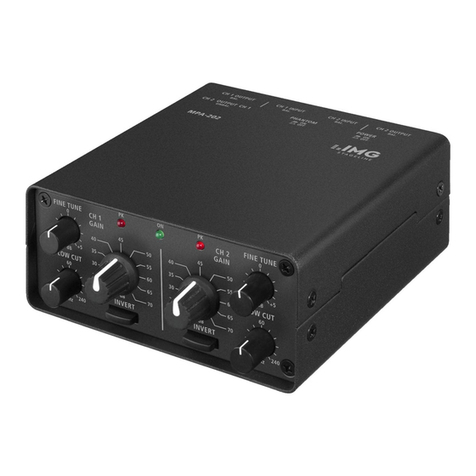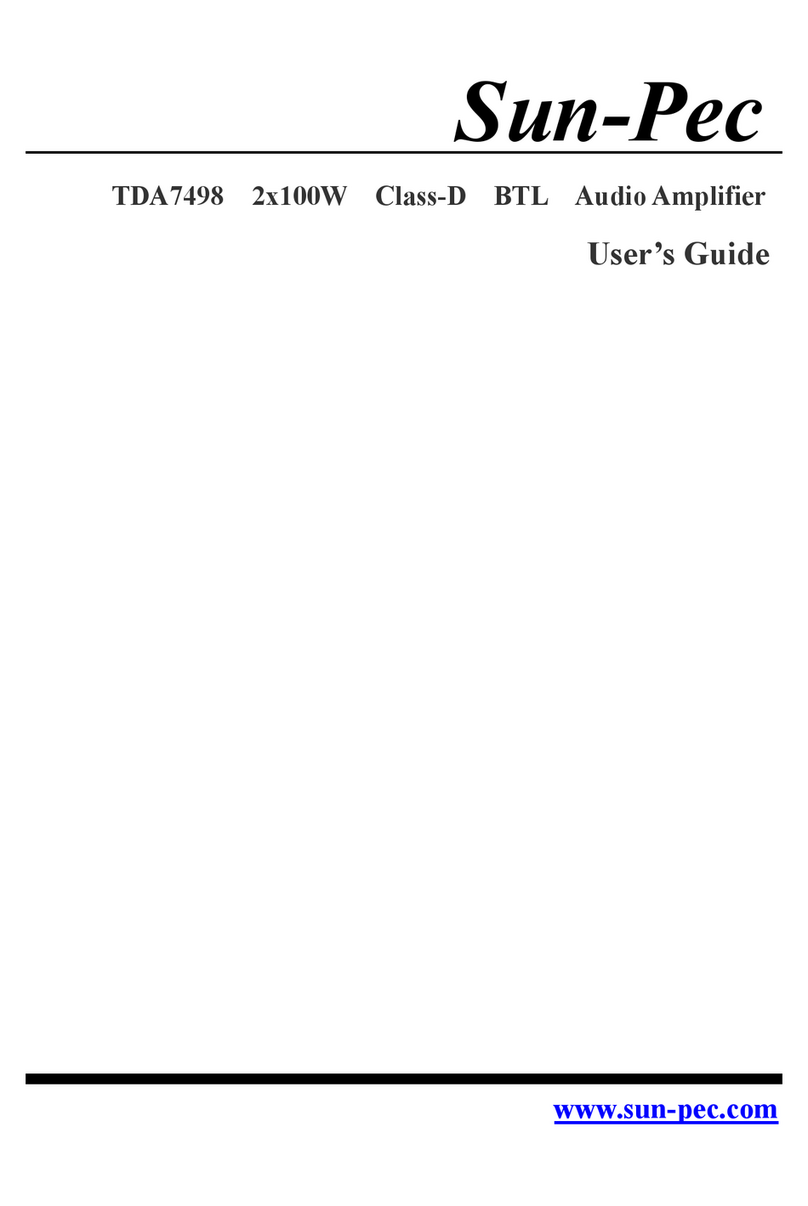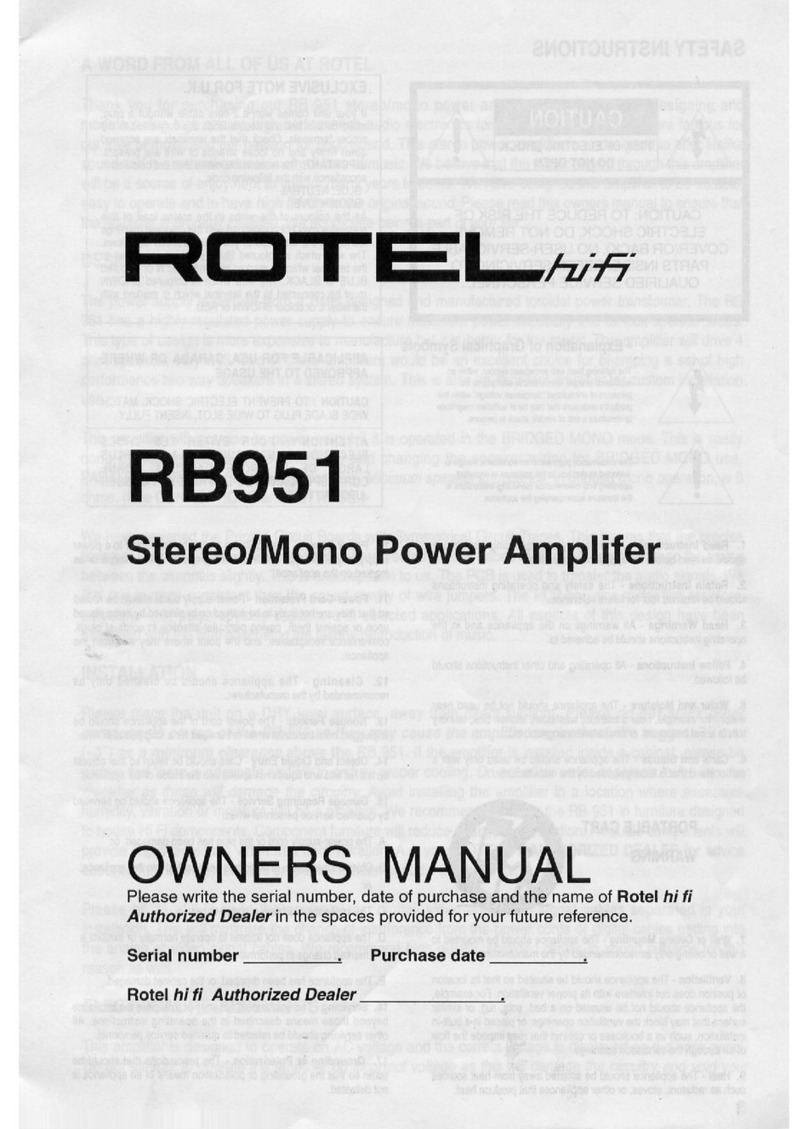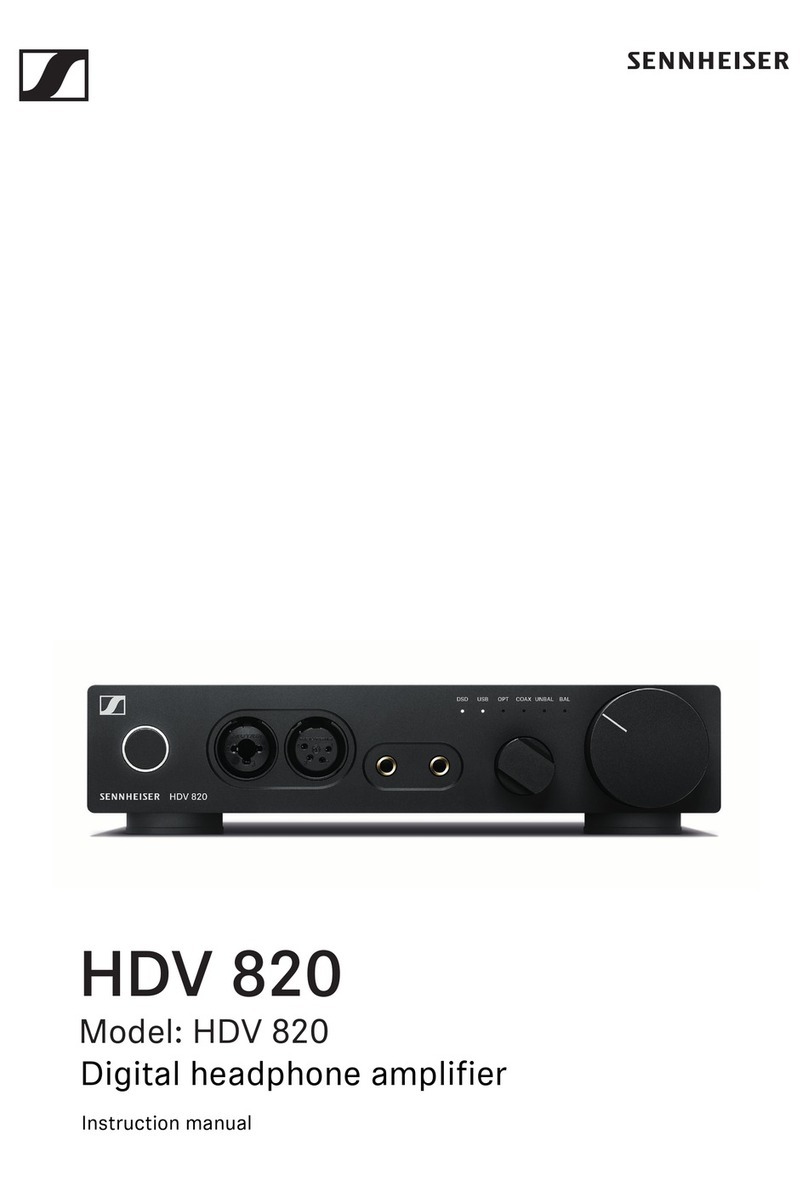SILTRONIX LA-600 Instruction and safety manual

SILTRONIX
MODEL LA-600 RF Amplifier
OPERATING/SERVICE MANUAL
SILTRONIX
330 VIA EL CENTRO
OCEANSIDE, CALIFORNIA 92054
Original manual print date unknown
Copyright 2007 Donald W. Thomas, K5ZRQ
Artwork and Diagrams by Bennie Bolin

Copyright Donald W Thomas, K5ZRQ
2
1.0 INTRODUCTION:
In putting together this manual, I used what limited information I could compile. The new updated
schematic, drawings and PCB layout were drawn by B. Bolin and were verified against a LA-600.
The Siltronix Model LA-600 is designed for operation in the 26 to 30 megacycle range. Due to the
high efficiency of the “Single Band” design, it is an excellent amplifier for the Ten Meter Amateur Radio
Operator, or for other services outside the United States.
Figure 1-1 Front Panel
The LA-600 features a High/Low RF transmit output selection and a pre-amplifier which provides
approximately 6 db gain on received signals. The LA-600 is designed with the best of components
available to provide years of trouble free service. It is important, however, the Operating Instructions
should be followed. The RF drive requirements to the amplifier should not be exceeded. Once the
unit has been installed and tuned for proper operation, retuning of the amplifier should not be required.
Even though the rugged 8950’s should provide years of trouble free operation, the most severe
conditions for the tubes exist during the tune-up procedure where the possibility of Off-Resonance
condition allows relatively large amounts of current to be drawn through the tubes. Unnecessary tune-
ups will reduce the life of the 8950’s. Once the unit is properly tuned for operation, major
readjustments should rarely be necessary. Occasional minor touch-up of the “PLATE” tuning to verify
peak performance is recommended. Both “PLATE” and “LOAD” controls may require small
adjustment when changing antennas or switching to and from a dummy load.
Figure 1-2Rear Panel

Copyright Donald W Thomas, K5ZRQ
3
1.1 SPECIFICATIONS:
Power Ratings:
SSB 800 Watts Nominal PEP Output on High Power
AM 500 Watts Nominal Output on High Power
AM 300 Watts Nominal Output on Low Power
Frequency Coverage:
26.0 to 30.0 MC
Tube Complement:
Four 8950’s in grounded grid and one 8950 Driver in grounded cathode.
RF Drive Requirements:
AM Operation -Nominal 3 Watts
Single Sideband -Nominal 7 Watts PEP
Meter:
Reads relative output RF voltage.
Relay Keying:
In SSB position, automatically switches the amplifier into the “Transmit” mode when SSB
modulation is present. Returnsto receive mode after a short delay when no modulation
is present.
In AM position, the AM carrier of the transmitter keeps the amplifier in the
“Transmit” mode as long as the transmitter is keyed.
“PI” Output Circuit:
Matches 52 to 75 ohm load and other impedances where the SWR does not exceed 2.5:1
Pre-Amplifier:
Provides approximately 6 db gain for received signals.
Power Supply:
Computer grade electrolytic capacitors and conservatively rated silicon rectifiers together with a
heavy duty power transformer provide a reliable power source.
AC Input: 117 Volts, 50-60 Hz
Front Panel Controls:
PLATE, LOAD, RELATIVEOUTPUT Meter, Power On Indicator, AC POWER Switch, MODE
Switch, RF POWER Switch, DELAY Switch, PRE-AMP Switch
Rear Panel:
L10 Access Hole, INPUT Jack, OUTPUT Jack, Fuse Holder, GRID TUNING Coil, GROUND Lug
Dimensions:
13” Wide x 5-3/4” High x 10-3/4” Deep
Weight:
27 Pounds

Copyright Donald W Thomas, K5ZRQ
4
2.0 INSTALLATION:
CAUTION: Lethal voltages are present in this amplifier! DO NOT REMOVE the bottom cover or
cabinet while the AC power cord is connected to the wall outlet.
Before removing the covers for any reason, allow at least one minute for the filter capacitors to
discharge after turning amplifier off and disconnecting the AC line cord. Then short the driver and final
plate circuit to ground with an insulated screwdriver before touching any of the components.
1. Select a location for your amplifier. RF amplifiers need ventilation, so choose a location that will
not restrict the air flow around the amp. While turned on, the unit will generate a lot of heat so do
not lay anything on top of the amplifier.
2. Do not exceed the nominal input RF drive requirements listed under “Specifications” by more than
15 percent. Check RF output specifications of the exciter (or, measure the power output with a
wattmeter).
3. Connect a short length of coaxial cable (RG-58 or RG-8) from the exciter (transceiver or
transmitter) to the “INPUT” jack on the rear of the LA-600. A PL-259 connector is required to
connect the coax cable to the amplifier. Coax cable should be as short as possible.
4. Connect antenna or suitable high power dummy load to the “OUTPUT” connector on the rear of
the LA-600 using RG8/U coax or similar type coax with a PL-259 connector.
5. The unit should be grounded for R.F. by attaching a ground strap of coaxial shield or 10-12 gauge
wire to the ground post on the amplifier. This should be connected by a short run to a ground rod
or cold water pipe. The idea is to have a short direct earth ground to keep the chassis at radio
frequency ground. In many cases normal operation can be had without such a ground, but a
good ground can help prevent television interference, and make tuning straightforward.
6. The A.C. line cord should be plugged into a three-wire outlet. The electrical circuit should be
capable of handling a 15 ampere load.

Copyright Donald W Thomas, K5ZRQ
5
3.0 CONTROLS:
3.1 Front Panel
Figure 2-1 Front Controls
1.POWER: Switches AC power “On” and “Off”
2.MODE: STDBY Position: Exciter operated directly into the antenna on transmit.
OP Position: Transmitting amplifier will be switched in when the exciter is
in AM and keyed or when the exciter is keyed in SSB with
modulation applied.
3.POWER: LOW Position: Provides 300 Watts AM RF Output for the nominal 3 watts input.
HIGH Position: Provides 500 Watts AM RF Output for the nominal 3 watts input.
4.DELAY: SSB Position: Allows the relay to remain in “Transmit” mode during short
pauses while transmitting.
AM Position: Continuously keeps the LA-600 in the transmit mode so long
as the exciter is in transmit.
5.PRE-AMP: OFF Position: Exciter receives signal directly from antenna.
ON Position: Exciter receives signal from PRE-AMP which provides
approximately 6 db gain. The PRE-AMP switch operates
independently of the mode switch. The PRE-AMP is
disabled during transmit.
6.RELATIVE POWER METER: Reads relative output RF power.
7. PILOT LIGHT: Red lamp indicator shows when amplifier is powered on.
8.LOAD: Used to properly match the amplifier plate circuit to the antenna.
9.PLATE: Used to tune the PA output to resonance.

Copyright Donald W Thomas, K5ZRQ
6
3.2 Rear Panel
Figure 2-2Rear Controls and Connections
1 AC Line Cord
2 FUSE Holder: Accepts Type 3AG 15 Amp fuse.
3 GRID TUNING: Tunes input grid circuit of the 8950 Driver tube.
4 GROUND: GroundLug for attaching ground wire from the chassis of the unit to earth ground.
5. C30: Tunes output plate circuit of the 8950 Driver tube.
6 OUTPUT: Connects RF output of the amplifier to the antenna coax feed line.
7L10 Access Hole: L10 is for tuning RF input to the Preamp circuit.
8INPUT: Connects RF Drive from exciter to input of amplifier.
4.0 OPERATION:
1. Setting the “MODE” switch to the “STDBY” position (or the main “POWER” switch to “Off”) permits
the exciter (transceiver) to operate directly into the antenna. This also allows any adjustment to be
made to the exciter before operating the LA-600. Use this setting for checking drive power.
2. Initial tune-up should be accomplished with the exciter (transceiver) set at the middle range of the
frequencies to be operated. This allows operation over the entire range without re-tuning the
amplifier.
3. The tune-up procedure should initially be accomplished by applying the exciter driving power for
short periods of time, not longer than 30 seconds. Release the push-to-talk button on the
microphone for about 30 seconds between each adjustment. During the final fine adjustments of
the tuning controls the drive may be held on for longer periods, provided only minor adjustments
are made. This method of tune-up will prevent the tubes from overheating during adjustments.
Once the tune-up procedure has been completed, the cooling fan, plus the high quality
components, will provide normal operation indefinitely with only an occasional minor tune-up.

Copyright Donald W Thomas, K5ZRQ
7
4.1 INITIAL TUNE-UP:
Read all of these tune-up instructions before turning the power on or attempting tune-up. It is very
important that the amplifier be properly tuned if it is to provide long life and good performance. Never
operate the amplifier if it is not properly tuned.
1. Set “DELAY” switch to the “AM” position.
2. Set “POWER” switch to the “LOW” position.
3. Set “PLATE” control to “5”.
4. Set “LOAD” control to “5”.
5. Place AC “POWER” switch in the “ON” position. The red pilot light should be on. Always allow at
least one minute warm-up before proceeding with tune-up or operation.
6. Key exciter (transceiver) in transmit mode (AM). If single sideband is the only mode available,
tune-up of the LA-600 can be accomplished by a sustained whistle into the microphone while
holding the push-to-talk button down. In the AM mode, it is only necessary to press the
push-to-talk button on the microphone (do not talk into the microphone in this mode). Either
method will provide the RF drive required for tuning the LA-600.
7. Quickly adjust “PLATE” control for maximum meter reading. There should be a definite maximum
meter reading and as the “PLATE” control is moved in either direction the reading should decrease.
8. Quickly adjust the “LOAD” control for maximum meter reading.
9. Steps #7 and #8 should be repeated several times until no greater reading can be obtained. Do
this as rapidly as possible.
10. Now switch RF “POWER” switch to “HIGH” and repeat Steps #7 and #8 several times until a
maximum reading is again obtained.
11. The “POWER” switch can now be used to select “LOW” or “HIGH” power output.
4.2 OPERATION AFTER TUNE-UP:
AM Operation: “DELAY” switch should be in the AM position. When the exciter (transceiver) is keyed
into the transmit mode, the LA-600 will automatically go into transmit. During AM
modulation a slight downward deflection may be noted on the meter. This is a normal
state and will not affect the audio quality of the transmitted signal.
SSB Operation: “DELAY” switch should be in the SSB position. If there is a long pause between
words during a transmission, the antenna switching relay in the LA-600 will return to
the receive position. Talking into the microphone will automatically return the
antenna switching relay to the transmit position. This relay action is normal.

Copyright Donald W Thomas, K5ZRQ
8
5.0 CIRCUIT DESCRIPTION:
The LA-600 is a classic TV Sweep Tube Amplifier using five 8950 tubes. One of the tubes is a grid
driven driver stage and the other four are the PA tubes in grounded grid final operation. It has a low
and high power output setting and features a pre-amplifier which provides approximately 6 db gain on
received signals.
Figure 5-1 Chassis Layout
In the figure above, you can see the Driver Section in the lower right corner. The variable capacitor
C30 to the right of the Driver tube is for tuning the Driver output and is accessed thru a small hole in
the side of the top cover. The four PA Tubes are just above the driver section. You can see the Plate
Cap connections with their Plate Parasitic Suppressors. Above them you will find the Plate Load and
Plate Tune capacitors used for tuning the finals for proper operation. In the bottom center, K1 is the
main relay for switching the PA in and out of line. K2 is mounted on the PCB and it functions to switch
the Preamp in and out of line as the PA is keyed. To the left is the main Power Transformer. Above it
are the four capacitors that make up the high voltage power supply filter. The Fan in the center of the
chassis runs continuously as long as the Amplifier is turned on providing air circulation for the tubes.

Copyright Donald W Thomas, K5ZRQ
9
6.0 PCB LAYOUT:
The PCB is mounted on the back wall of the amplifier. Itcontains the Receive Preamplifier Q1,
Transmit detector Q2, Power Amp relay driver Q3, Preamp relay driver Q4, and Relay K2 for switching
the preamp in and out of the circuit. There are 12 points shown in the drawing by a number inside a
circle. These points are connections from the PCB to various points in the LA-600 as indicated by the
labeling.
Figure 6-1 PCB
The wire connections to the PCB are as listed below:
1. Wire from PCB to relay K2 NO contact.
2. Connects to RF Input Jack.
3. Connects to Delay switch SSB contact.
4. Connects one end of R42, the other end of R42 is connected to the RF Output Jack.
5. Connects to the front panel meter.
6. Connects to Preamp switch.
7. Connects to Preamp switch.
8. Connects to the common contact of the Mode switch.
9. Connects to the +16V line.
10. Wire from PCB to relay K2 NC contact.
11. Connects to Relay K1A NC contact.
12. Connects to Preamp switch.
13. Hole on PCB ground trace that is unused.

Copyright Donald W Thomas, K5ZRQ
10
7.0 ALIGNMENT:
ALIGNMENT –LA-550, LA-600, LA-650
This alignment procedure applies to the LA-550, LA-600, and LA-650 amplifiers.
1. Driver Neutralization
A. Connect RF Voltmeter to the cathodes of the four PA tubes. If a RF Voltmeter is not
available, an Oscilloscope with a bandwidth over 30 Mhz can be used with a 10X Probe.
B. With linear amplifier off, key your transmitter, depress relay K-1 with an insulated tool, and
adjust the neutralization trimmer (it is under the driver tube) for a dip or minimum
reading on the RF Voltmeter or Oscilloscope. The amplifier is now neutralized.
2. Bias (Driver)
A. Connect a DC Voltmeter to Pin 2 of the driver tube (the cathode).
B. Turn linear amplifier on, set to high power position.
C. Adjust bias pot (one closest to power supply) for a .5 VDC reading on Pin 2.
3. Bias (Power Amp)
A. Connect DC Voltmeter across the one ohm, 10 watt resistor in the cathode of the power amp.
B. Turn linear amplifier on, set to high power position.
C. Depress relay using insulated tool. Adjust power amplifier bias pot for a .05 reading on your
voltmeter.
4. Tune Up:
A. Adjust Driver Grid Tuning and Plate tune output capacitor for maximum power out.
B. Adjust power amplifier front panel Plate and Load for maximum power out.

Copyright Donald W Thomas, K5ZRQ
11
8.0 PARTS LIST:
Capacitors
Ref# Description NOTES:
C1 .01uF Ceramic Disc AC Input bypass
C2 .01uF Ceramic Disc AC Input bypass
C3 .0022uF Ceramic Disc HV Section
C4 .0022uF Ceramic Disc HV Section
C5 .0022uF Ceramic Disc HV Section
C6 .0022uF Ceramic Disc HV Section
C7 225uF 300VDC Electrolytic HV Section, CG2250T300B1
C8 225uF 300VDC Electrolytic HV Section, CG2250T300B1
C9 225uF 300VDC Electrolytic HV Section, CG2250T300B1
C10 225uF 300VDC Electrolytic HV Section, CG2250T300B1
C11 100uF 150VDC Electrolytic Bias Power Supply
C12 100uF 150VDC Electrolytic Bias Power Supply
C13 250uF 20VDC Electrolytic LV Power Supply
C14 .002uF Ceramic Disc PA Section V2 socket
C15 .002uF Ceramic Disc PA Section V3 socket
C16 .002uF Ceramic Disc PA Section V4 socket
C17 .002uF Ceramic Disc PA Section V5 socket
C18 .002uF Ceramic Disc Driver Section
C19 1.5 –20 pF Compression Trimmer Driver Section, Marked 404
C20 50pF Mylar Driver Section
C21 100uF 250VDC Electrolytic HV Section, Bottom chassis term strip
C22 .002uF Ceramic Disc Driver socket pin 11
C23 .002uF Ceramic Disc Driver socket pin 3
C24 .002uF Ceramic Disc Driver socket pin 2
C25 3.3pF 3KV Ceramic Disc Driver Section
C26 3.3pF 3KV Ceramic Disc Driver Section
C27 .002uF 2KV Ceramic Disc Driver Section
C28 .002uF 2KV Ceramic Disc Driver Section
C29 270pF 2.5KV Mica, CM35FK271JN3 Driver Section
C30 46pF, Air Variable Driver Section, Marked 074-063
C31 120pF, Compression Trimmer PA Section, Marked 302M
C32 .002uF Ceramic Disc PA Section
C33 .002uF Ceramic Disc PA Section
C34 .002uF Ceramic Disc PA Section V2 socket
C35 .002uF Ceramic Disc PA Section V2 socket
C36 .002uF Ceramic Disc PA Section V3 socket
C37 .002uF Ceramic Disc PA Section V3 socket
C38 .002uF Ceramic Disc PA Section V4 socket
C39 .002uF Ceramic Disc PA Section V4 socket
C40 .002uF Ceramic Disc PA Section V5 socket
C41 .002uF Ceramic Disc PA Section V5 socket
C42 .002uF 2KV Ceramic Disc PA Section
C43 .002uF 2KV Ceramic Disc PA Section
C44 270pF 2.5KV Mica, CM35FK271JN3 PA Section
C45 270pF 2.5KV Mica, CM35FK271JN3 PA Section

Copyright Donald W Thomas, K5ZRQ
12
Capacitors
Ref# Description NOTES:
C46 105pF, Air Variable, PA TUNE PA Section
C47 710pF, Air Variable, PA LOAD PA Section, Marked 074-062ASP7341
C48 39 pF Ceramic Disc On PCB
C49 33 pF Ceramic Disc On PCB
C50 .01uF Ceramic Disc On PCB
C51 10 pF Ceramic Disc On PCB
C52 .01uF Ceramic Disc On PCB
C53 .002uF Ceramic Disc On PCB
C54 30 MFD 15V Electrolytic On PCB
C55 .002uF Ceramic Disc On PCB
C56 30 MFD 15V Electrolytic On PCB, SSB delay cap
C57 .002uF Ceramic Disc On PCB
C58 .002uF Ceramic Disc On PCB
C59 .002uF Ceramic Disc On PCB
Resistors
Ref# Description NOTES:
R1 470K 1W HV Section
R2 470K 1W HV Section
R3 470K 1W HV Section
R4470K 1W HV Section
R5 39K 6W, DALE FP33 6W HV Section
R6 39K 6W, DALE FP33 6W HV Section
R7 39K 6W, DALE FP33 6W HV Section
R8 39K 6W, DALE FP33 6W HV Section
R9 1K 1W Bias Power Supply
R10 4.7K 1W VR1 and term strip
R11 4.7K 1W Across VR1
R12 6.8K 1W Tied to VR1
R13 10K 1/2W Driver Section, Bottom chassis term strip
R14 12K 10W HV Section, Bottom chassis term strip
R15 10K 10W HV Section, Bottom chassis term strip
R16 100 5W Driver Section, Bottom chassis term strip
R17 27K 1W On bottom chassis terminal strip
R18 4.7K 1W By VR2
R19 4.7K 1W By VR2
R20 47K 1W PA Grid resistor V5
R21 47K 1W PA Grid resistor V4
R22 47K 1W PA Grid resistor V3
R23 47K 1W PA Grid resistor V2
R24 100 5W Mounted behind Preamp Switch
R25 1 10W Mounted behind Preamp Switch
R26 75 20W Mounted behind Mode and Power Switch
R27 47K 1/2W Mounted by K1
R28 12K 2W Driver Section

Copyright Donald W Thomas, K5ZRQ
13
Resistors
Ref# Description NOTES:
R29 2.2K 2W Driver Section
R30 68K 1/2W On PCB
R31 1K 1/2W On PCB
R32 10K 1/2W On PCB
R33 220 1/2W On PCB
R34 470 1/4W On PCB
R35 22K 1/4W On PCB
R36 220 1/2W On PCB
R37 6.8K 1/4W On PCB
R38 3.3K 1/2W On PCB
R39 22K 1/4W On PCB
R40 1K 1/4W On PCB
R41 15K 1/4W On PCB
R42 10K 2W One end connected to PCB
R43 150 1/2W On Terminal Strip
Potentiometers
Ref# Description NOTES:
VR1 5K Bottom Chassis
VR2 25K Bottom Chassis
VR3 10K On PCB
Diodes
Ref# Description NOTES:
D1 1N4822 HV Section
D2 1N4822 HV Section
D3 1N4822 HV Section
D4 1N4822 HV Section
D5 1N4005 Bias Power Supply, On Terminal Strip
D6 1N4005 LV Power Supply, On Terminal Strip
D7 1N914 On PCB, Keying detector
D8 1N4005 Across K1
D9 1N914 On PCB
D10 1N4005 On PCB Across K2
D11 1N34A On PCB, Meter detector
Transistors
Ref# Description NOTES:
Q1 2N5814 On PCB, Preamp
Q2 2N5814 On PCB, Keying control
Q3 2N5814 On PCB, Relay driver
Q4 2N5814 On PCB, Relay driver

Copyright Donald W Thomas, K5ZRQ
14
Tubes
Ref# Description NOTES:
V1 8950 Driver Section
V2 8950 PA Section
V3 8950 PA Section
V4 8950 PA Section
V5 8950 PA Section
Switches, Fuses, Relays, Lamp, Misc
Ref# Description NOTES:
F1 15 Amp
S1 SPST AC POWER Switch
S2 SPDT MODE Switch
S3 DPST RF POWER Switch
S4 SPDT DELAY Switch
S5 DPST PREAMP Switch
K1 3PDT
K2 DPDT Potter Brumfield, 12V, KT11D
K3 DPDT AZ531-09-1
LAMP # 1815 14V 200Ma, 2.8 Watts, T3.25
SCREW Top Cover, 8-32 x 1/4” Binder Head 6 each
SCREW Bottom Cover, 6 each
Inductors, RFC, Transformer
Ref# Description NOTES:
L1 4 uH Filament Choke
L2 17 uH Driver Plate HV Choke
L3 55 uH Driver Plate HV Choke
L4 55 uH PA Cathode Choke
L5 Wire Coil Driver Section, Pi Network
L6 17 uH PA Plate HV Choke
L7 55 uH PA Plate HV Choke
L8 Wire Coil PA Section, Pi Network
L9 30 uH PA Section, Mounted under C49
L10 Preamp Tuning Coil On PCB, Tunes Preamp Input
L11 GRID TUNING Coil Access on back of chassis
RFC 1 47 2W with 4 Turns Metal Strip Driver Section
RFC 2 100 2W with 5 Turns 14ga Wire PA Section
RFC 3 100 2W with 5 Turns 14ga Wire PA Section
RFC 4 100 2W with 5 Turns 14ga Wire PA Section
RFC 5 100 2W with 5 Turns 14ga Wire PA Section
T1 Power Transformer 271-025

Copyright Donald W Thomas, K5ZRQ
15
9.0 POWER TRANSFORMER:
USING TRANSFORMER 271-025 (10 LEADS) WITH LA-550, LA-600, and LA-650
The original power transformer used in the LA-550, 600 and 650 series linear amplifiers was the 9
or 8 lead version of the 271-025. If the linear uses 6LF6 tubes it has the 9 lead version, because of
the requirement to provide 6 volts to the filament of the driver tube. If the linear uses 8950 tubes the 8
lead version may have been used as there is no requirement for a 6 volt center tap. The 8950 has a
12 volt filament.
Because the 10 lead version of 271-025 has no 6 volt filament tap it cannot be used to replace the
transformer in a linear with 6LF6 unless a simple modification is performed. This consist of replacing
the driver tube with an 8950 and re-wiring the filament pin (pin #1) to the 12 VAC filament source. The
other socket pin connections remain the same. The driver stage must be re-aligned and re-
neutralized because the internal capacitances of the two different tube types are not the same.
Also when using the 10 lead transformer,the two primary windings must be wired in parallel. For
the 110V AC source the 2 windings are (1) orange and brown and (2) yellow and green. To wire them
in the proper phase the orange and yellow leads are both connected to the unswitched line cord lead
at the term strip (this is the line cord lead that is not connected to the fuse holder). The green and
brown leads are both connected to the adjacent terminal. This terminal has a wire leading to the
power switch.
10.0 REPAIR TIP:
SWITCH REPAIR TIP
If you have a switch like this and it is being intermittent or not working at all, it probably just needs
cleaning. This is a DPST switch and if you cannot find a suitable replacement, this is how to
disassemble and clean the old one. When removing switch, make sure you remember to identify
which wire connects to which terminal. Word of caution, the AC POWER and the PREAMP switch are
used to secure the front panel to the chassis.
Figure 10-1

Copyright Donald W Thomas, K5ZRQ
16
Disassembly: Carefully drill off the braded end of the two rivets holding the switch together using a
small drill bit. Then push the rivets out of the switch while holding the switch front and back. Once the
rivets are removed, the internal spring will be pushing the switch apart. Lift the top cover off while
watching where all the pieces are located. The picture above shows a switch before repairing and one
disassembled showing all the parts and the two bolts to put it back together with. Remove the three
piece part (cap, spring, and guide) and lay to the side. Remove the brass roller that looks like a mini
dumbbell and clean it to remove any oxidation. Next using a Q-tip and alcohol, clean the contacts
inside the switch housing. It’s possible the bottom contacts have worn down some over time. If so,
the raised track running down the middle of the housing may now be holding the brass roller up
preventing it from making firm connection with the bottom contacts. Using a small knife point, carefully
scrape both sides of the track a small amount by the contacts. You can also scrape down the top a
very small amount. Do not remove much material, just scrape a little off. The track also acts as a wall
between the contacts. This should allow the roller better contact if the track was holding it up.
Reassembly:Put brass roller back into the housing and push it to the end with the side contacts. Put
the three piece part back in with the grooved guide end riding on the middle of the brass roller. Place
the two insulators back on the sides of the housing. Move toggle on top cover to the side labeled “ON”.
While holding the housing and insulators together, slide the top cover down over the housing. The
bottom of the toggle lever fits into the top plastic cup of the three piece part as it goes together. If you
have it backwards, the “ON” position will be “OFF”. Just turn the top around if needed to put it right.
Two small nails that will fit thru the holes will hold it together while finishing up. You can check the
“ON and “OFF” with an ohmmeter at this point easily. The two bolts and nuts needed to replace the
rivets are size 2-56. The bolt is 2-56 x 3/4in. The bolts will fit the holes in the top cover, but will have
to be threaded thru the housing. Remove one of the nails and insert a bolt. Screw it in all the way
down and watch the housing bottom as you tighten it. You only want to tighten enough to barely
compress the housing. Place a nut on the end and tighten only enough to barely compress the
housing from that side. If tightened too much, you may distort the housing where the brass roller may
bind and not move freely. Now put in the other bolt and nut. Tighten the same way. You only need
them snug to hold the switch together properly. Verify the switch is working properly. You can use a
drop of nail polish to secure the nuts if needed.

Copyright Donald W Thomas, K5ZRQ
17
Of course, no manual would be complete without the manufacturer’s equipment warranty.
WARRANTY POLICY
SILTRONIX CORPORATION warrants, to the original purchaser, this equipment to be free of defects
in material or workmanship, except for tubes, transistors and diodes, under normal service for a period
of six months from the date of original purchase. Tubes, transistors and diodes are covered under the
warranty policy for a period of 90 days. This warranty is valid only if the enclosed card is properly
filled out and mailed to the factory within ten days of purchase.
Do not ship equipment to the factory without prior authorization. This warranty is limited to repairing or
replacing only the defective parts, and is not valid if the equipment has been tampered with, misused,
or damaged. All returns for repairs must be freight prepaid. This equipment is manufactured for use
on such frequencies as authorized by the FCC. Siltronix does not accept any responsibility for
un-authorized use of such equipment.
Table of contents

